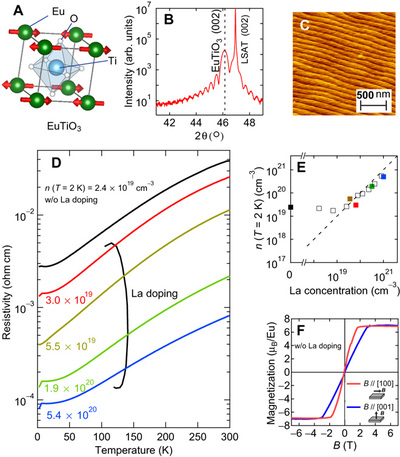PRESS RELEASE
- Research
- 2018
Anomalous Hall effect derived from multiple Weyl nodes in high-mobility EuTiO3 films
Authors
Kei Takahashi, Hiroaki Ishizuka, Tomoki Murata, Qing Y Wang, Yoshinori Tokura, Naoto Nagaosa & Masashi Kawasaki
Abstract
EuTiO3, a magnetic semiconductor with a simple band structure, is one of the ideal systems to control the anomalous Hall effect (AHE) by tuning the Fermi level. The electrons in the conduction bands of La-doped EuTiO3 are subject to the spin-orbit interaction and Zeeman field from the spontaneous magnetization, which generates rich structures in the electron band such as Weyl nodes. This unique property makes EuTiO3 a relatively simple multiband system with its Berry curvature being controlled by electron doping and magnetic field. We report a nonmonotonic magnetic field dependence of the anomalous Hall resistivity, which is ascribed to the change of electronic bands induced by the Zeeman splitting during the magnetization process. The anomalous Hall resistivity measurement in high-mobility films grown by gas source molecular beam epitaxy shows additional terms in the AHE during the magnetization process, which is not proportional to the magnetization. Our theoretical calculation indicates that the change of Zeeman field in the process of canting the magnetic moments causes the type II Weyl nodes in the conduction band to move, resulting in a peculiar magnetic field dependence of the AHE; this is revealed by the high-quality films with a long scattering lifetime of conduction electrons.

Science Advances:http://advances.sciencemag.org/content/4/7/eaar7880.full

